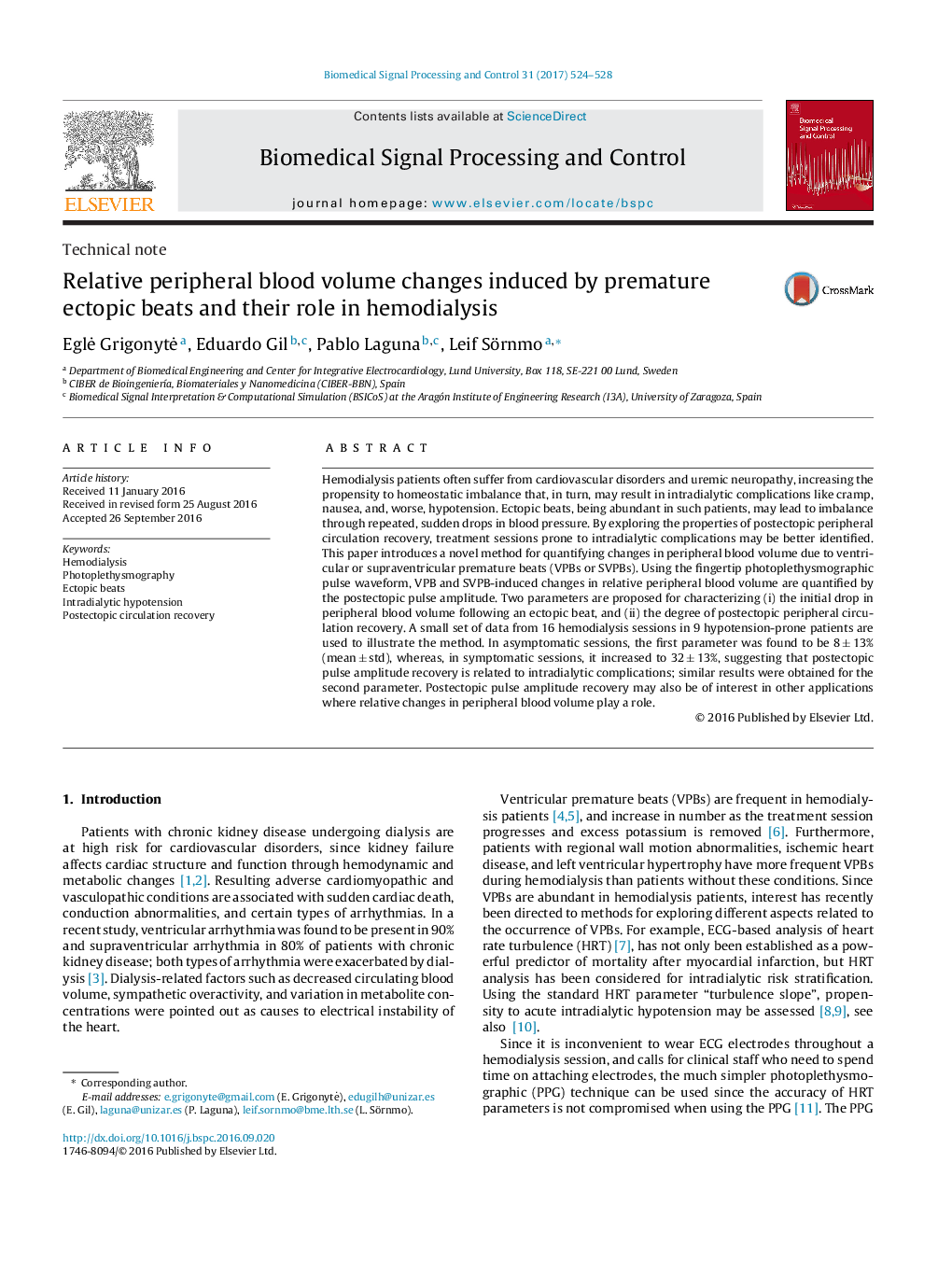| Article ID | Journal | Published Year | Pages | File Type |
|---|---|---|---|---|
| 6951152 | Biomedical Signal Processing and Control | 2017 | 5 Pages |
Abstract
Hemodialysis patients often suffer from cardiovascular disorders and uremic neuropathy, increasing the propensity to homeostatic imbalance that, in turn, may result in intradialytic complications like cramp, nausea, and, worse, hypotension. Ectopic beats, being abundant in such patients, may lead to imbalance through repeated, sudden drops in blood pressure. By exploring the properties of postectopic peripheral circulation recovery, treatment sessions prone to intradialytic complications may be better identified. This paper introduces a novel method for quantifying changes in peripheral blood volume due to ventricular or supraventricular premature beats (VPBs or SVPBs). Using the fingertip photoplethysmographic pulse waveform, VPB and SVPB-induced changes in relative peripheral blood volume are quantified by the postectopic pulse amplitude. Two parameters are proposed for characterizing (i) the initial drop in peripheral blood volume following an ectopic beat, and (ii) the degree of postectopic peripheral circulation recovery. A small set of data from 16 hemodialysis sessions in 9 hypotension-prone patients are used to illustrate the method. In asymptomatic sessions, the first parameter was found to be 8 ± 13% (mean ± std), whereas, in symptomatic sessions, it increased to 32 ± 13%, suggesting that postectopic pulse amplitude recovery is related to intradialytic complications; similar results were obtained for the second parameter. Postectopic pulse amplitude recovery may also be of interest in other applications where relative changes in peripheral blood volume play a role.
Related Topics
Physical Sciences and Engineering
Computer Science
Signal Processing
Authors
EglÄ GrigonytÄ, Eduardo Gil, Pablo Laguna, Leif Sörnmo,
